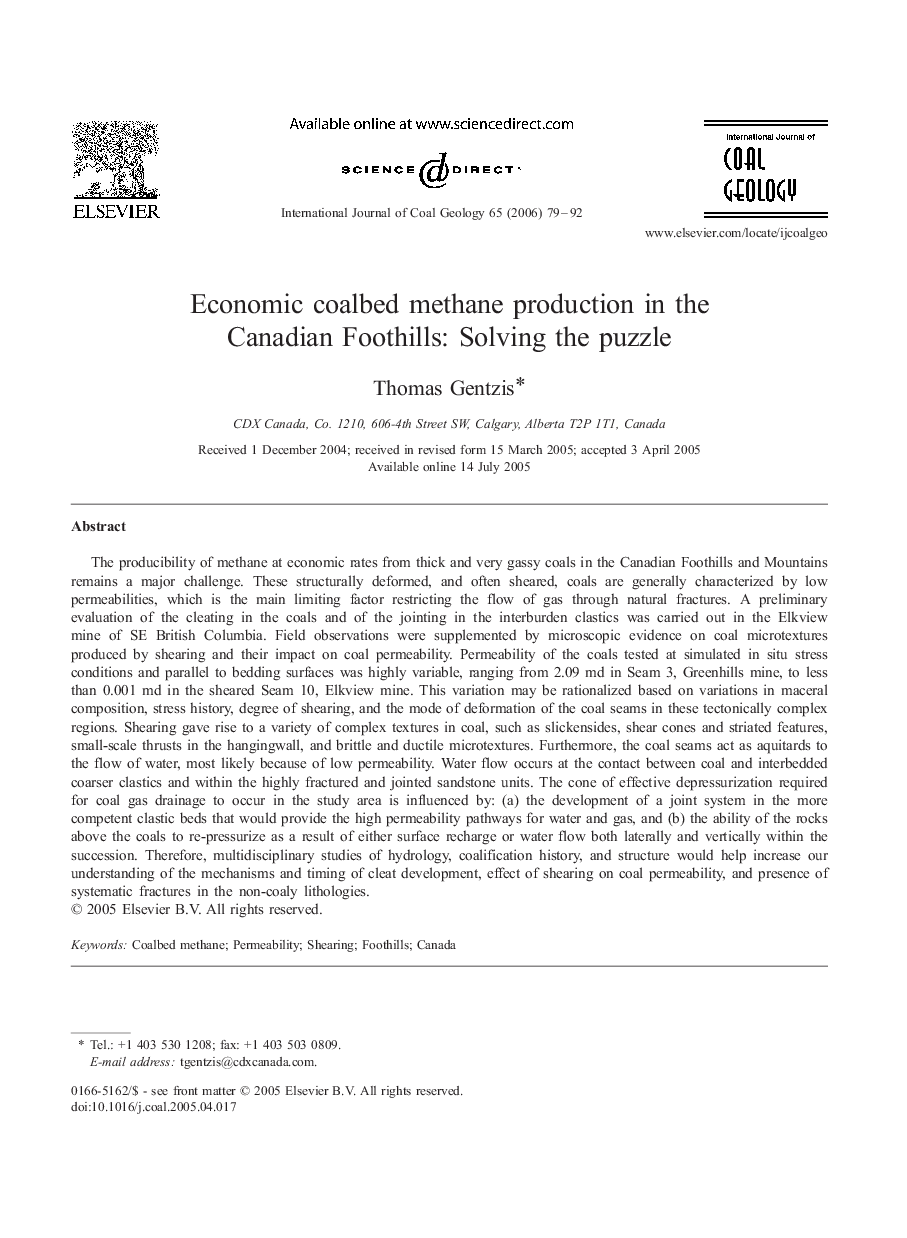| Article ID | Journal | Published Year | Pages | File Type |
|---|---|---|---|---|
| 1754351 | International Journal of Coal Geology | 2006 | 14 Pages |
The producibility of methane at economic rates from thick and very gassy coals in the Canadian Foothills and Mountains remains a major challenge. These structurally deformed, and often sheared, coals are generally characterized by low permeabilities, which is the main limiting factor restricting the flow of gas through natural fractures. A preliminary evaluation of the cleating in the coals and of the jointing in the interburden clastics was carried out in the Elkview mine of SE British Columbia. Field observations were supplemented by microscopic evidence on coal microtextures produced by shearing and their impact on coal permeability. Permeability of the coals tested at simulated in situ stress conditions and parallel to bedding surfaces was highly variable, ranging from 2.09 md in Seam 3, Greenhills mine, to less than 0.001 md in the sheared Seam 10, Elkview mine. This variation may be rationalized based on variations in maceral composition, stress history, degree of shearing, and the mode of deformation of the coal seams in these tectonically complex regions. Shearing gave rise to a variety of complex textures in coal, such as slickensides, shear cones and striated features, small-scale thrusts in the hangingwall, and brittle and ductile microtextures. Furthermore, the coal seams act as aquitards to the flow of water, most likely because of low permeability. Water flow occurs at the contact between coal and interbedded coarser clastics and within the highly fractured and jointed sandstone units. The cone of effective depressurization required for coal gas drainage to occur in the study area is influenced by: (a) the development of a joint system in the more competent clastic beds that would provide the high permeability pathways for water and gas, and (b) the ability of the rocks above the coals to re-pressurize as a result of either surface recharge or water flow both laterally and vertically within the succession. Therefore, multidisciplinary studies of hydrology, coalification history, and structure would help increase our understanding of the mechanisms and timing of cleat development, effect of shearing on coal permeability, and presence of systematic fractures in the non-coaly lithologies.
